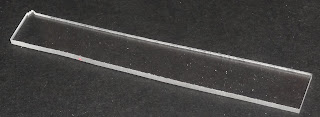Retrieved from: http://www.treknature.com/gallery/Asia/India/photo181885.htm
First precedent image of a palm leaf and I like the way that it draws the eye into the centre. I would like to form my model around the idea of circles and/or spirals which is what I will look into for my other precedent images.
Retrieved from: http://innovis.cpsc.ucalgary.ca/innovis/uploads/Research/PhylloTrees/phyllotrees1.jpg
This image is of a Phyllo Tree and has a really beautiful spiral design. What I like about this is the fact that a spiral is generally quite a flowing, smooth shape however in this instance it has been made to look quite spiky and angular which is the opposite to its natural form.
Retrieved from: http://farm3.static.flickr.com/2522/3790881052_5975ddac48.jpg
This dahlia flower has used patterns of repetitive circles to form another circle. The negative space is effective and would lend itself to make an interesting model.
Retrieved from: http://www.istockphoto.com/stock-illustration-1138345-vector-shell-mollusc-helix-spiral.php
A drawing of a typical spiral shell. I like that it is made from separate parts that get smaller towards the middle. This would be a good image to put into illustrator and trace around as it has clear lines and could be put into solidworks to form a 3D model.
Retrieved from: https://www.acclaimimages.com/_gallery/_images_n300/0015-0605-1809-2700_photos_nautilus_shell_cross_section_patterns_nature.jpg
This is a Nautilus shell cross section where a normal shell has been cut in half to reveal the inside of the shell. This has show some negative spacing which is more aesthetic to the eye then just a regular shell.
Retrieved from: http://lejeuneusa.org/2001-2002-us-grant-recipients
Double helix DNA strand. The two strands twisting perfectly around one another would make an interesting model however would need to link up so that they are not two separate entities.



























